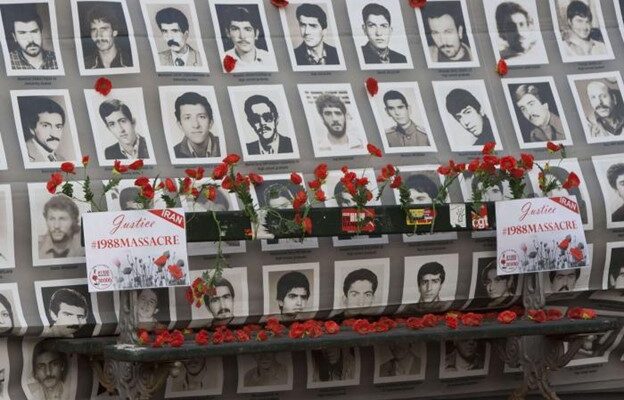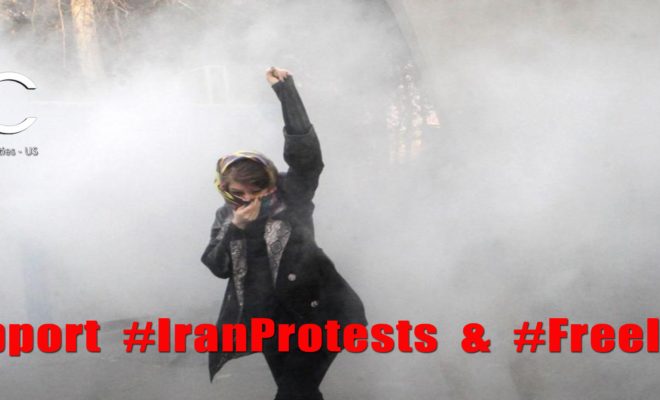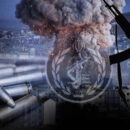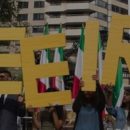Who is poisoning Iran’s schoolgirls?

Who is poisoning Iran’s schoolgirls?
Is the regime responsible — and does Russia play a role?
Stimson Center | April 27, 2023
Editor’s note: While the Stimson Center rarely publishes anonymous work, the author of this commentary is a Tehran-based analyst who has requested anonymity out of legitimate concern for their personal safety. The writer is known to appropriate staff, has a track record of reliable analysis, and is in a position to provide an otherwise unavailable perspective.
In December 2005, the Russian journalist Anna Politkovskaya reported on mass poisonings in Chechen schools. In an article in Novaya Gazeta, later republished in English by The Guardian, she wrote that “doctors were convinced it was a case of poisoning. Then the government came up with its own diagnosis — mass hysteria.”
A Russian government commission tasked with investigating the poisoning said there was no need to worry and that the symptoms reported by the students stemmed from “mass psychosis due to stress.” The commission added that “no evidence of chemical poisoning and potentially dangerous objects were revealed on the school premises.”
A few months later, on October 7, 2006, Politkovskaya, who had covered Russian soldiers’ widespread abuse of civilians in the Second Chechen War, was assassinated.
It seems that the Iranian Supreme Leader Ayatollah Ali Khamenei is borrowing from his good friend Vladimir Putin’s playbook, as new waves of poisonings have been reported in more than a dozen Iranian cities.
The first reported case was on November 30, 2022, at a girls’ high school in the seminary city of Qom. This was followed by events in other schools. All the students had similar symptoms: nausea, dizziness, headache and mild paralysis. In the following months, the attacks spread to hundreds of cities in almost all Iranian provinces, sending thousands of students to hospitals.
The continuation of the attacks, coupled with the apparent apathy of public officials, has led many to believe that the regime is involved.
Originally, it seemed that religious extremists with Taliban-like mentality were responsible, especially given the fact that the attacks began in Qom not long after nationwide protests erupted over the death in police custody of a young woman, Mahsa Amini, for wearing supposedly inadequate hijab. Since then, however, the security forces’ lack of concern; the crackdown on people who raised questions about the attacks; the suppression of students, their families, and medical staff; and a disinformation campaign by the government, the parliament, and the judiciary have only intensified suspicions that the regime is responsible.
Mohammad Reza Hashemian, an emergency room doctor at Daneshvari hospital in Tehran, told the Ham-Mihan newspaper that the gas used in the attack “is a complicated combination of several gas agents impossible for ordinary people to access.” He added that the compound “has been cleverly produced” to cause illness but not death. Students have said they smelled rotten fish, rotten oranges, and diesel fuel before experiencing dizziness, headaches, nausea, and partial and mild paralysis.
The health ministry, despite weeks of testing, has yet to announce any cause. A ministry statement said tens of its best scientists had tested the samples but have not been able to isolate and identify the gas involved. Worse, the ministry has downplayed the severity of the incidents, saying that “in 95 percent of the cases, symptoms were the result of mental and psychological tensions and not gas attacks.” Yet, the minister contradicted his ministry’s own official statement, saying the symptoms “may have been due to a mild poisoning by an unknown factor.”
Iranian government media have sought to defuse popular anger but only fanned it by spreading even more egregious disinformation. Fars News Agency, affiliated with the regime’s security forces, has blamed students for their own poisoning, claiming that “90 percent of the attacks were done by students.” This came after the education minister blamed the attacks on “naughty students trying to skip classes.”
Four months after the start of the attacks, President Ebrahim Raisi finally tasked interior minister Ahmad Vahidi to investigate. Raisi also ordered the media, schools, and hospitals not to comment further on the issue.
The interior ministry has so far issued four statements, blaming the attacks either on students or on an unidentified “enemy.” The ministry also said that “100 suspects have been arrested” but none have been identified, indicted, or tried.
Iranian security forces often boast of their tight control and supervision of the population. The spy cameras that blanket Iranian cities surely must have found evidence about the culprits for the poisonings. And yet there is still no accountability.
Meanwhile, people who have questioned official statements have been indicted, riot police have been called in to suppress protests by students’ families, and school officials have been admonished not to report new cases of poisoning to the media. This is while new attacks are being reported almost every day. The situation has become so dire that Amnesty International finally accepted a plea issued two months ago by Iranian civil society activists, human rights lawyers, and political activists asking international organizations to investigate the poisonings. Amnesty has written to Iran’s Prosecutor General Mohammad Jafar Montazeri to ask for an independent inquiry.
The handling of the case suggests that it will be difficult to clear the regime of wrongdoing. The attacks have taken place in an atmosphere of near-total mistrust in the government that has fed conspiracy theories. Some believe that Taliban-like extremists in the regime have carried out the poisonings with the implicit support of Khamenei, both to punish students who have protested and to warn others not to protest or face worse consequences. The common feeling is that these attacks are acts of intentional retaliation for the protests that swept Iran last fall and that schoolgirls are being singled out because they are the most vulnerable participants in the “Women, Life, Freedom” movement.
Clearly, the attacks have been well-organized and planned, which strongly suggests official involvement. The sophistication of the operation and the materials used also appear to rule out amateurs.
It seems that Khamenei has learned a lot from his mentor, Putin. And like the Russian dictator known for his brutality in Chechnya and now Ukraine, it will be hard for him to escape ultimate blame.
https://www.stimson.org/2023/who-is-poisoning-irans-schoolgirls/







